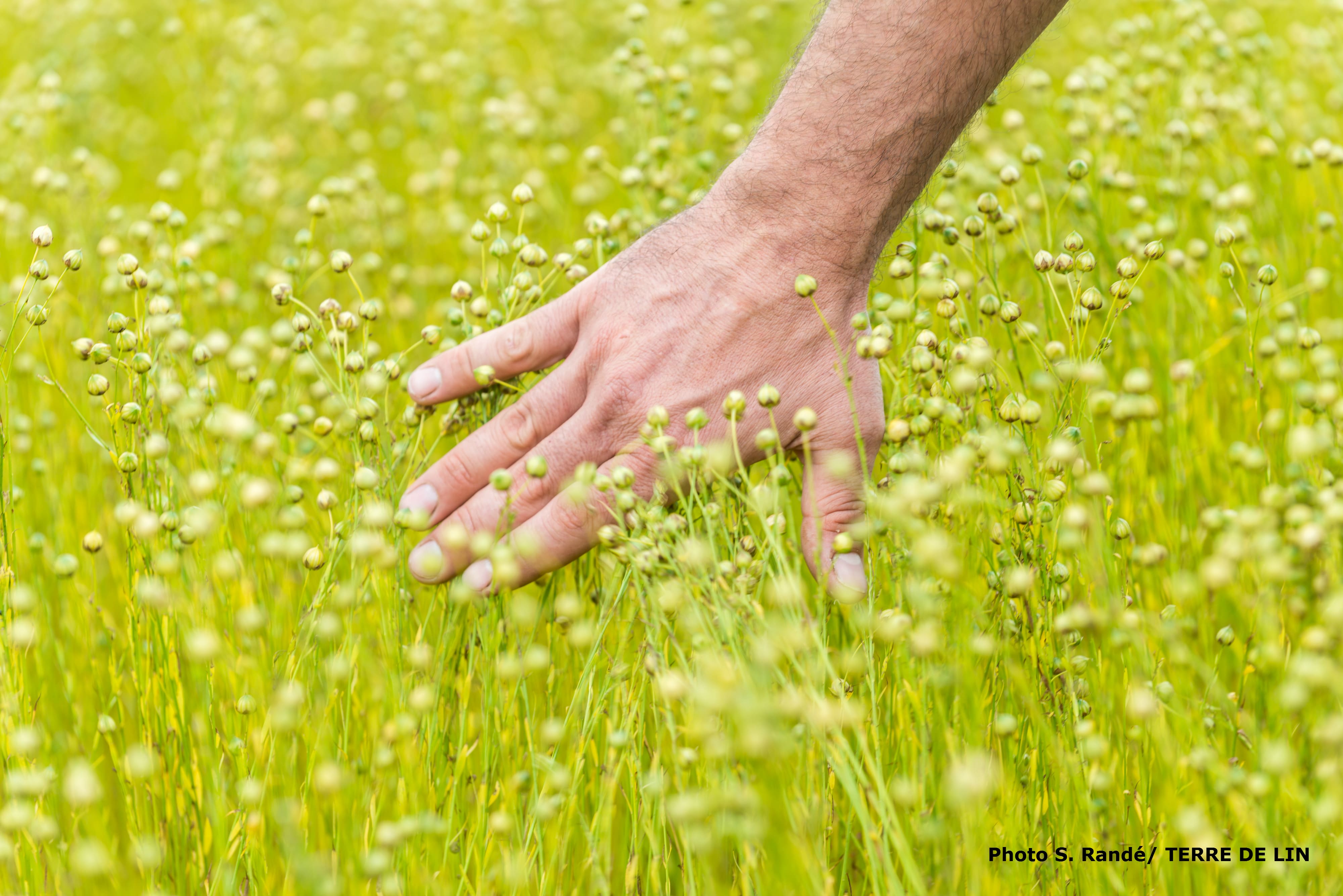Flaxcomp®: an eco-design
Eco-sustainable, Eco-design, Eco-recyclable: this biocomposite creates its own circular economy!
The benefits of a green industry
Thanks to their intrinsic porosity, flax fibers increase the sound and thermal insulation properties of structures.
If we add the natural viscoelastic behavior of flax, and the use of a thermoplastic polymer, FLAXCOMP® has strong vibration damping capabilities and an impact resistance that is far superior to glass or carbon fiber composites!
Flax is particularly light and has a density 40% lower than glass fiber.
In terms of mechanical characteristics, flax fiber has a specific rigidity (related to weight) 30% higher than glass, and a specific resistance equal to that of glass.
All this makes flax fiber a great opportunity for structural and non-structural applications!
| Fibre | Density | stiffness (GPa) | Tensile Strength (MPa) | Specific stiffness (GPA/G/CM3) | Specific strength (MPA/G/cm3) |
|---|---|---|---|---|---|
| Flax | 1,4 - 1,5 | 55 - 75 | 800 - 1 500 | 38 - 52 | 550 - 1 030 |
| E-glass | 2,5 -2,59 | 70 - 74 | 2 000 - 2 400 | 27 - 29 | 780 - 940 |
| Basalt | 2,67 | 85 - 87 | 2 800 - 3 100 | 31,9 - 35 | 1 048 - 1 161 |
M. Z. Rahman, Mechanical and damping performances of flax fibre composites - a review, Composites Part C: Open Access 4 (2021)
Thanks to all these mechanical properties, Flaxcomp® can adapt to all your designs including the most complex shapes.
Why is Flaxcomp® eco-sustainable?
The use of natural and renewable materials leads to a significant reduction in carbon emissions from the manufacturing phase to the use of the products themselves.
It is the flax fibre in the composition of Flaxcomp® that gives it its eco-sustainable characteristics in addition to the choice of corn starch based resin. Flax is a natural product that does not deplete the soil. No irrigation and few phytosanitary products: a French crop!
The main advantages of flax cultivation are as follows: this crop does not require irrigation, it is a short-cycle crop (100 days) that uses few phytosanitary products, does not require any GMO and defoliant and thus does not create waste. Flax can be integrated into a crop rotation, and allows diversification of the crop rotation, integrating a spring crop that requires little nitrogen. It is generally a local crop feeding a local economic fabric.
Linen is THE eco-sustainable material par excellence.
In Normandy, where flax has historically been grown, it consumes very little arable land and does not encroach on agricultural crops used for food or feed. All these advantages make flax a decidedly eco-responsible material.
Why is Flaxcomp® eco-designed?
Conventional composite materials based on thermosetting polymers include fossil resources such as oil in their composition. Flaxcomp®, by favoring the use of flax and thermoplastic resin (for example corn starch), naturally reduces the carbon footprint of your products.
Moreover, as the resins used are thermoplastic, FLAXCOMP® is in essence recyclable!
Did you know? The world production of long fiber flax is 175 tons per year and France produces 64% of this world volume, the vast majority in Normandy. At the European level, French production of long-fibre flax amounts to 81%. Source : CELC information release - Economic observatory of flax - 20/05/2021
Why is Flaxcomp® eco-recyclable?
In the world of bioplastics, some are biosourced and others biodegradable, but few can claim to be both. The product of research by DEMGY and the Terre de Lin cooperative, Flaxcomp® is a biosourced product which can be recycled because the raw materials of which it is made, flax and corn starch, are themselves 100% natural!
Flaxcomp® allows you to significantly reduce the environmental footprint of your products.

